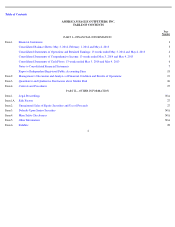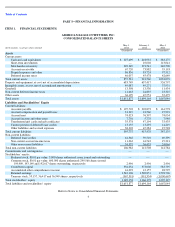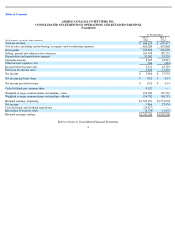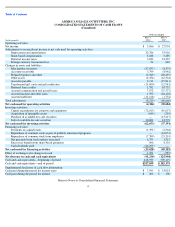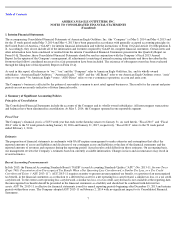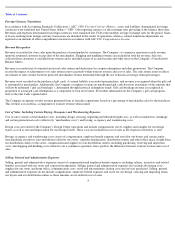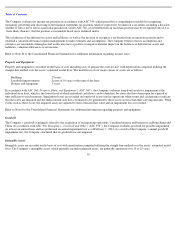American Eagle Outfitters 2013 Annual Report Download - page 13
Download and view the complete annual report
Please find page 13 of the 2013 American Eagle Outfitters annual report below. You can navigate through the pages in the report by either clicking on the pages listed below, or by using the keyword search tool below to find specific information within the annual report.
Table of Contents
Reclassification
Certain reclassifications have been made to the Consolidated Financial Statements for prior periods in order to conform to the current period
presentation.
3. Cash and Cash Equivalents and Short-term Investments
The following table summarizes the fair market values for the Company’s cash and marketable securities, which are recorded on the
Consolidated Balance Sheets:
Proceeds from the sale of investments were $10.0 million and $23.8 million for the 13 weeks ended May 3, 2014 and May 4, 2013, respectively.
There were no purchases of investments for the 13 weeks ended May 3, 2014. The purchase of investments was $15.2 million for the 13 weeks
ended May 4, 2013.
There were no unrecognized gains or losses for the Company’s available-for-
sale securities for the 13 weeks ended May 3, 2014 or May 4, 2013.
4. Fair Value Measurements
ASC 820, Fair Value Measurement Disclosures (“ASC 820”),
defines fair value, establishes a framework for measuring fair value in accordance
with GAAP, and expands disclosures about fair value measurements. Fair value is defined under ASC 820 as the exit price associated with the
sale of an asset or transfer of a liability in an orderly transaction between market participants at the measurement date.
Financial Instruments
Valuation techniques used to measure fair value under ASC 820 must maximize the use of observable inputs and minimize the use of
unobservable inputs. In addition, ASC 820 establishes a three-tier fair value hierarchy, which prioritizes the inputs used in measuring fair value.
These tiers include:
As of May 3, 2014 and May 4, 2013, the Company held certain assets that are required to be measured at fair value on a recurring basis. These
include cash equivalents and short-term investments.
12
(In thousands)
May 3,
2014
February 1,
2014
May 4,
2013
Cash and cash equivalents:
Cash
$
217,117
$
330,013
$
302,188
Money
-
market
88,535
25,696
54,954
Treasury bills
22,047
63,224
6,033
Commercial paper
—
—
20,000
Total cash and cash equivalents
$
327,699
$
418,933
$
383,175
Short
-
term investments:
Treasury bills
$
—
$
10,002
$
103,144
Term
-
deposits
—
—
9,897
Total short
-
term investments
$
—
$
10,002
$
113,041
Total
$
327,699
$
428,935
$
496,216
•
Level 1
—
Quoted prices in active markets for identical assets or liabilities.
• Level 2 — Inputs other than Level 1 that are observable, either directly or indirectly, such as quoted prices for similar assets or
liabilities; quoted prices in markets that are not active; or other inputs that are observable or can be corroborated by observable
market data for substantially the full term of the assets or liabilities.
• Level 3 —
Unobservable inputs (i.e., projections, estimates, interpretations, etc.) that are supported by little or no market activity and
that are significant to the fair value of the assets or liabilities.


